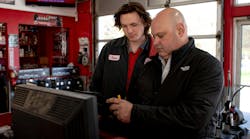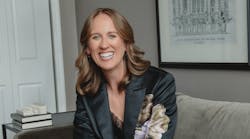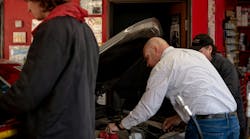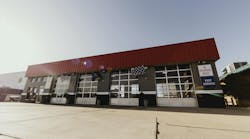At a press conference in Google's office recently, John Krafcik, former head of the tech giant's self-driving car project, talked about his new job title: CEO of Waymo, a stand-alone mobility company under Google's parent company, Alphabet Inc.
Reporters listened intently as Krafcik spoke, then bent over their laptops to spread the news. That's when a video began rolling.
The video -- not as flashy as a Google-born company with a pithy name -- was narrated and featured happy, mellow music while showing a content man in glasses, wind in his hair, riding alone in one of Waymo's cars on the streets of Austin, Texas.
The video was proof of an apparent first in self-driving technology: someone riding in a fully self-driving vehicle on public roads, without a steering wheel or brake pedals, unsupervised by an engineer.
The significance of the ride was lost in the news coverage, which focused primarily on Waymo's new name, business goals and whether consumers are ready for the technology.
But people involved in the ride saw it as something bigger, comparing it to one historic event.
"Austin is the Kitty Hawk of driverless cars," Steve Adler, mayor of Austin, said in a statement, referring to the place where the Wright brothers recorded the first flight. "We should all be proud that our creative and innovative city is where such a huge leap forward can take place."
The ride occurred in October 2015, more than a year before Waymo made it public. The man in the car, Steve Mahan, is the former director of the Santa Clara Valley Blind Center, and is legally blind.
"When I was 17 years old, I used to drive a 1957 Chevrolet Bel Air convertible with a Continental kit, and I thought that was so cool," Mahan told reporters. "I would gladly trade that '57 Chevy for continual access to a self-driving car at this point in my life."
Mahan's ride took place in Austin, which has no autonomous vehicle testing regulations. It started with Mahan and Nathaniel Fairfield, principal software engineer for Waymo, riding through neighborhood streets amid traffic and pedestrians. Midway through, Fairfield exited the car, and Mahan rode by himself.
"I've never been to Austin, but now I'm driving in it," Mahan said during the video.
The ride was a taste of freedom for Mahan; it was also seen as an opportunity for Texas to become a base for new automotive innovation, competing with California and Michigan.
What's next?
Krafcik did not disclose whether Waymo had any new automaker partnerships in the works or how the company planned to make money, but said its joint venture with Fiat Chrysler Automobiles to develop 100 self-driving Chrysler Pacifica minivans was in the "build phase."
The CEO stressed that Waymo is focusing on building a better driver, not on building a self-driving car.
The focus on software comes as no surprise to analysts, especially given Alphabet's approach to other products such as consumer electronics, where it provides its Android operating system to a range of hardware producers.
"Google's whole philosophy is that they don't manufacture anything," said Dave Sullivan, an analyst at AutoPacific. "They develop ideas and software. They've never been in the hardware business."
The auto industry is attractive to a company such as Alphabet, Sullivan said, because it provides another venue for people to consume, and eventually pay for, its products. But the prohibitive costs of manufacturing, selling and servicing vehicles make self-driving software development a more cost-effective strategy to pursue.
Gaining an edge
Krafcik, an industry veteran who joined the self-driving car project in 2015, gives Waymo an advantage in attracting automakers, Sullivan said. Krafcik, 55, spent nearly 15 years in product development at Ford Motor Co. and another 10 years as an executive at Hyundai Motor America, coming to Waymo with the insight to develop a product that fits manufacturers' needs from top to bottom, he said.
Alphabet's size and brand recognition also position it to lead the industry in supplying and licensing autonomous systems, said Michelle Krebs, senior analyst at Autotrader.
Krebs said, "Google has the opportunity to proliferate self-driving vehicles in a way many others cannot."
This article originally appeared on autonews.com





